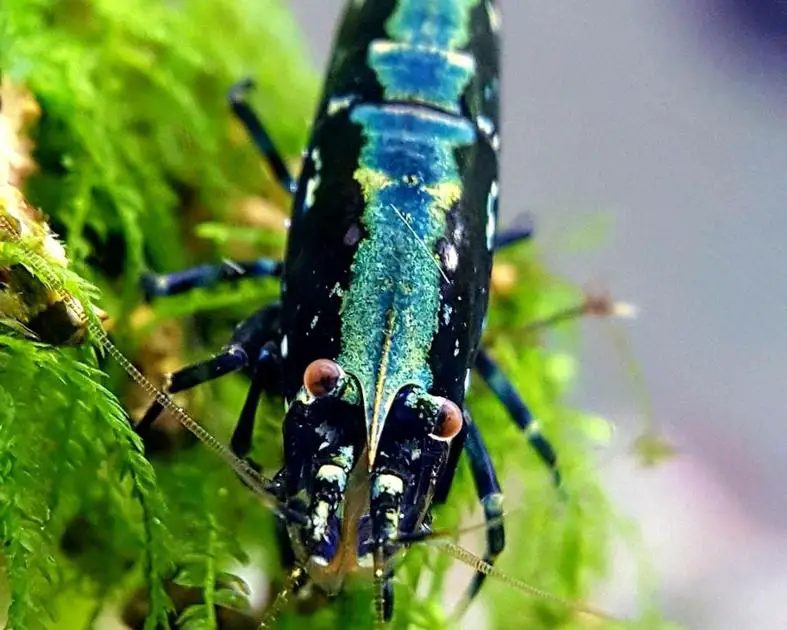It’s no secret that maintaining a pristine and healthy fish tank environment can be quite a challenge. Factors like water quality, filtration, and preventing pesky algae from taking over can be daunting tasks. If you’re struggling with Black Beard Algae (BBA) in particular, you might be pondering the use of Otocinclus, small sucker-mouthed catfish, to help control it. This article dives into the effectiveness of this method and offers other helpful tips for keeping your aquarium BBA-free.
So, can Otocinclus tackle your BBA problem? In short, not really. While these handy little fish are known for being algae-eaters, their specialty is consuming soft green algae, not the more stubborn BBA.
Fear not! We have all the information you need to address BBA in your fish tank right at your fingertips. From understanding its causes to exploring various solutions, soon, your aquatic environment will be lush, clear, and inviting.
Why Otocinclus Aren’t Effective Against BBA
Limited Diet Habits
Otocinclus catfish, affectionately known as “Otos” in the aquarium hobby, primarily munch on the soft green algae that grow on surfaces such as plants, decorations, and tank walls. As BBA is much tougher and more stubborn than the algae Otos usually consume, they aren’t the most effective solution for this particular problem.
Size Matters
Otos are also relatively small, typically growing around 2-4 inches in length. While they may help control some algae types, their minute size means they can’t consume large amounts of algae at once. So even if they do eat some BBA, it’s unlikely to be enough to put a dent in an infestation.
Causes of Black Beard Algae
Nutrient Imbalances
Algae growth often results from high nitrate and phosphate levels, which can stem from a variety of factors including overfeeding, poor water quality, and improper filtration.
How to Get Rid of Scuds in Shrimp Tank
Poor Water Flow
Stagnant areas in the tank with low water movement can facilitate BBA growth since it tends to flourish in areas with limited oxygen exchange.
Incorrect Lighting
BBA may also appear due to too much light, too little light, or an imbalance in the light spectrum.
Alternative Solutions to Tackle BBA
Keeping Otocinclus and Other Algae-Eating Tank Mates
While Otos can’t single-handedly solve your BBA problem, they can help control other algae types, which may contribute to a healthier overall tank ecosystem. You may also consider Amano shrimp, Nerite snails, or Siamese Algae Eaters, which may nibble on BBA occasionally.
How Many Amano Shrimp in a 20 Gallon Tank?
Chemical Interventions
Products like Flourish Excel or hydrogen peroxide can help to spot treat BBA when used with caution. Always follow product instructions and keep a close eye on your fish and plants during treatment.
Manual Removal
Sometimes, the best way to tackle BBA is through good old-fashioned elbow grease. Physically removing it using a toothbrush, scrubber, or algae scraper can help prevent it from spreading further.
Optimal Tank Conditions
Maintaining the proper water chemistry, lighting schedule, and filtration can help discourage BBA growth. Make sure to conduct regular water changes, adjust your lighting, and check your filter system.
How Often Should I Change Water in a Well-Planted Tank?
Aquarium Plants
Introduce fast-growing plants to help consume excess nutrients in the water column, outcompeting algae for resources.
Frequently Asked Questions
- Q: Can Otocinclus eat other algae types besides BBA?
- A: Yes, Otos primarily consume soft green algae, aiding in overall tank cleanliness and algae control.
- Q: Are there any other fish or invertebrates that may target BBA?
- A: Siamese Algae Eaters, Amano shrimp, and Nerite snails may occasionally eat BBA, but no species can be relied upon to completely eradicate it.
- Q: How do I optimize water chemistry and quality to prevent BBA growth?
- A: Regular water changes, proper feeding, and adequate filtration are all essential to maintaining optimal water chemistry.
- Q: Can I use chemical treatments to tackle BBA?
- A: Yes, products like Flourish Excel or hydrogen peroxide can help, but be sure to follow product instructions carefully and keep a close watch on your fish and plants during treatment.
- Q: Can introducing more plants help with BBA control?
- A: Yes! Fast-growing plants can compete with algae for nutrients, often inhibiting algae growth.
In conclusion, while Otocinclus alone won’t solve a BBA problem, a combined approach of proper water chemistry, manual removal, suitable tank mates, and the addition of fast-growing plants can contribute to a healthy environment that keeps BBA at bay. So, with patience and persistence, your aquatic paradise will remain lush, clean, and free of unwanted algae. Happy fish keeping!

